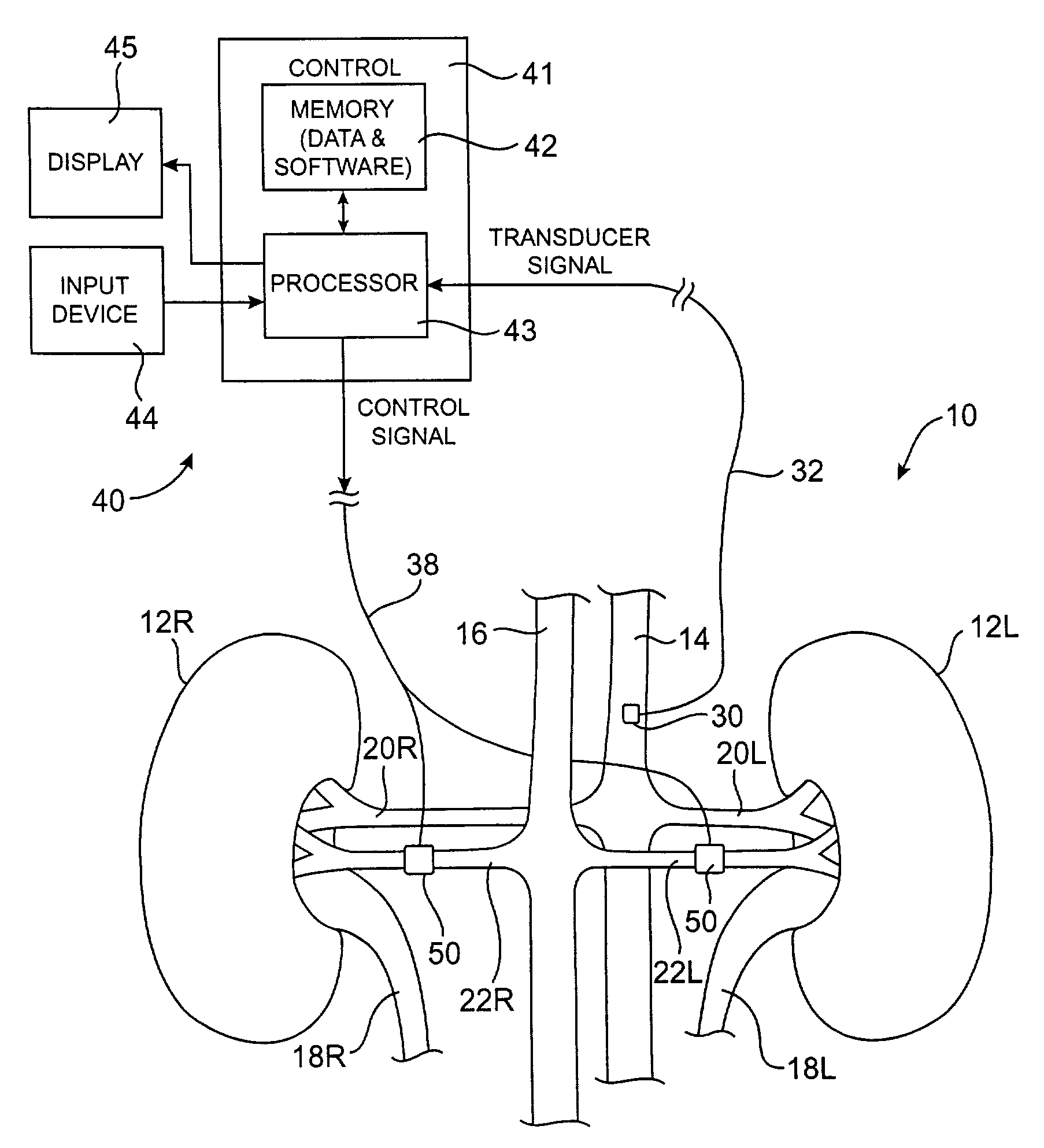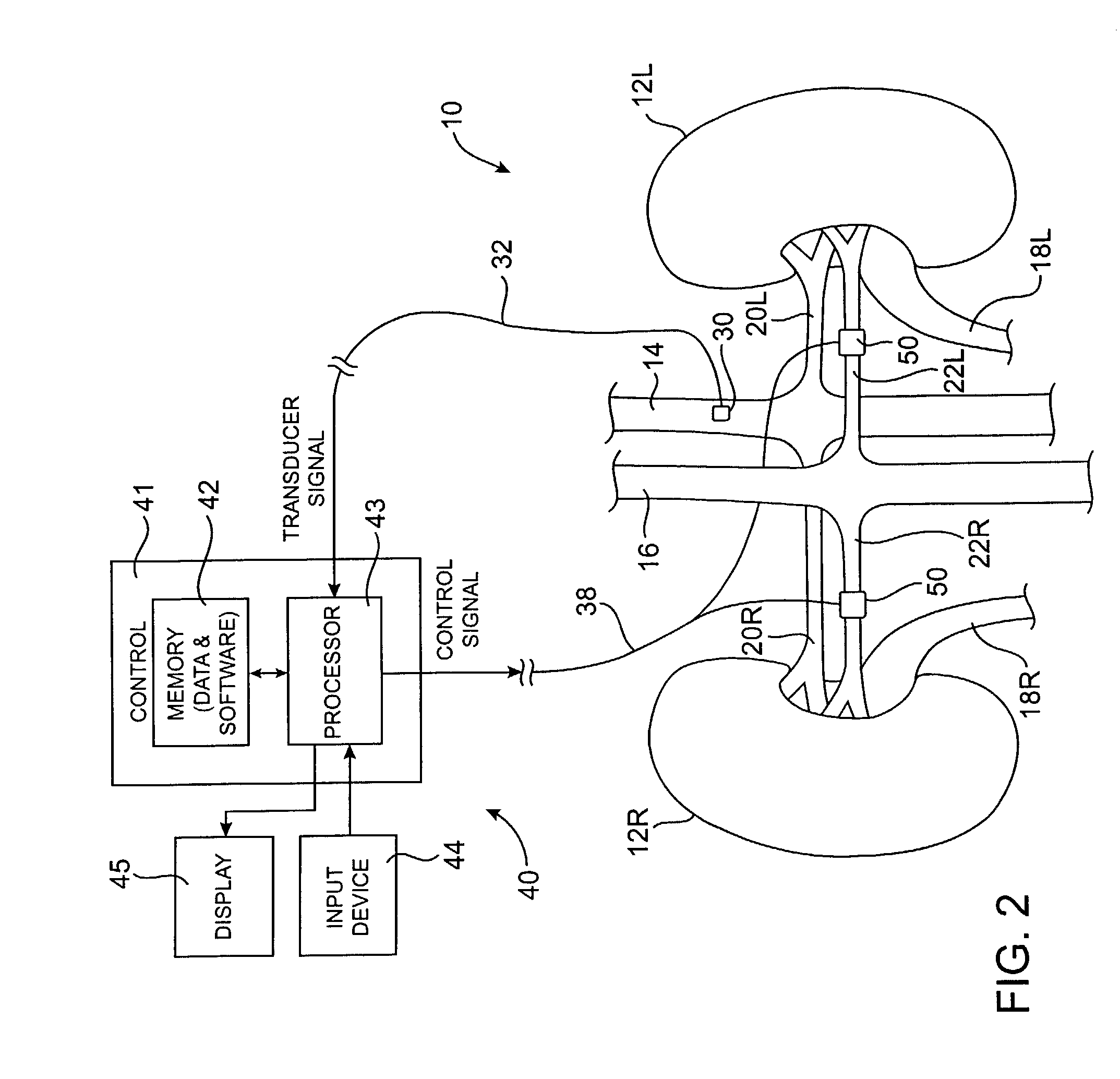Systems and methods for controlling renovascular perfusion
- Summary
- Abstract
- Description
- Claims
- Application Information
AI Technical Summary
Benefits of technology
Problems solved by technology
Method used
Image
Examples
Embodiment Construction
[0030]The following detailed description should be read with reference to the drawings in which similar elements in different drawings are numbered the same. The drawings, which are not necessarily to scale, depict illustrative embodiments and are not intended to limit the scope of the invention.
[0031]Refer now to FIG. 1 which is a schematic illustration of the renal system 10 of an adult human. The right and left sides of the renal system 10 are substantially symmetrical and are identified by the letters R and L, respectively. Blood is supplied to the kidneys 12 by way of the descending aorta 14 and the renal arteries 20. Blood is removed from the kidneys 12 by way of the inferior vena cava 16 and the renal veins 22.
[0032]The descending aorta 14 bifurcates downstream into the common iliac arteries 28. The direction of the arterial blood flow in the descending aorta 14 is indicated by arrows 24, and the direction of the venous blood flow in the inferior vena cava 16 is indicated by ...
PUM
 Login to View More
Login to View More Abstract
Description
Claims
Application Information
 Login to View More
Login to View More - R&D
- Intellectual Property
- Life Sciences
- Materials
- Tech Scout
- Unparalleled Data Quality
- Higher Quality Content
- 60% Fewer Hallucinations
Browse by: Latest US Patents, China's latest patents, Technical Efficacy Thesaurus, Application Domain, Technology Topic, Popular Technical Reports.
© 2025 PatSnap. All rights reserved.Legal|Privacy policy|Modern Slavery Act Transparency Statement|Sitemap|About US| Contact US: help@patsnap.com



